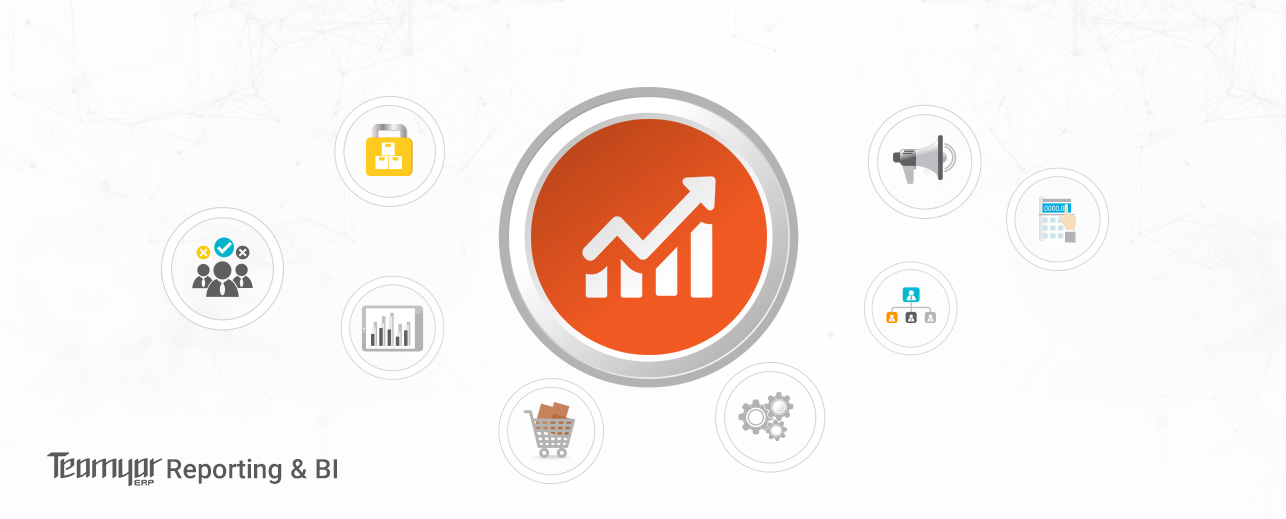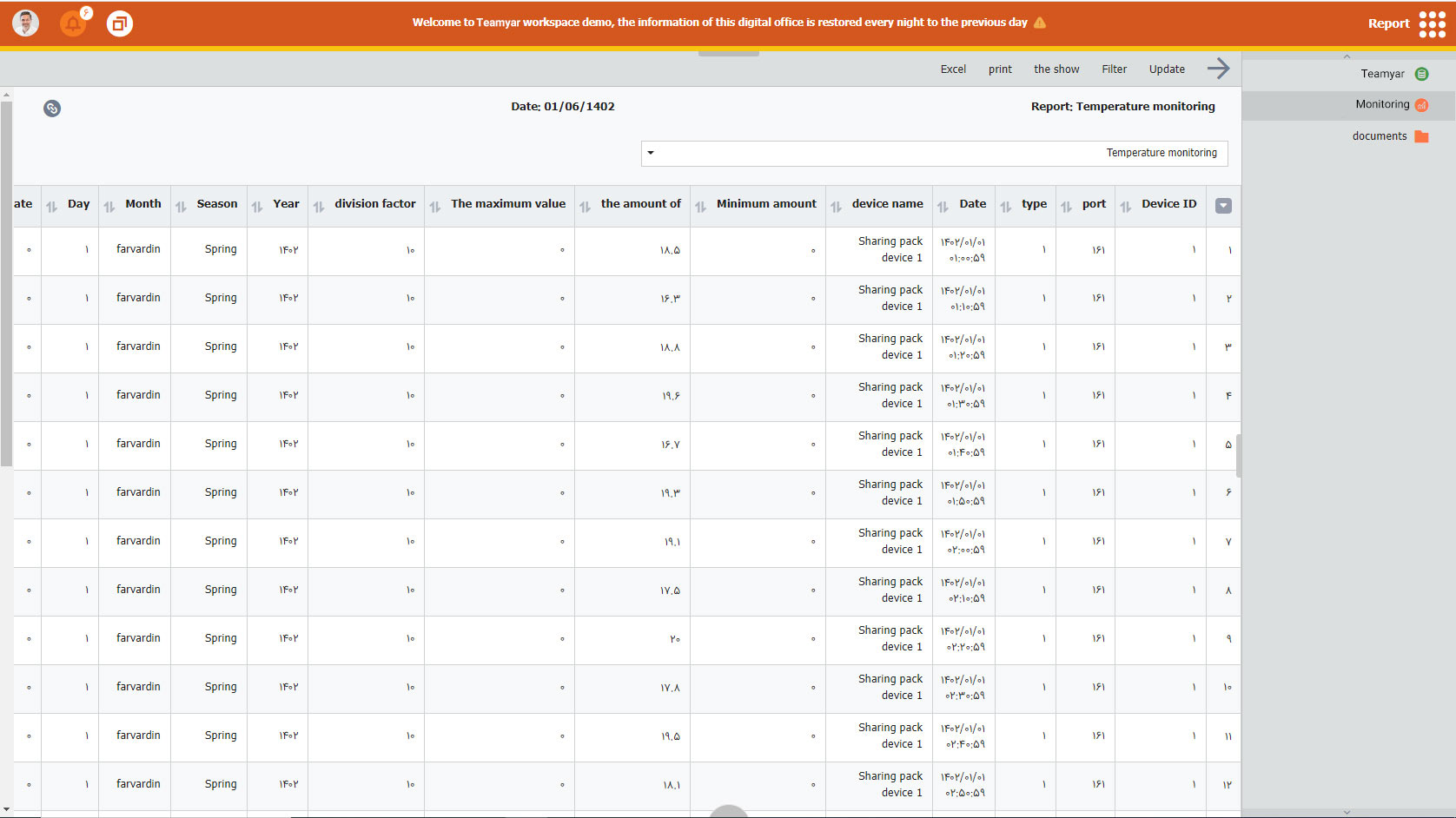
Business Intelligence module
BI software is a practical tool for creating combined and analytical reports from different systems. Teamyar BI module with innovative business solutions provides the possibility of reporting, real-time analytical processing, data and information analysis, management dashboards, data mining and predictive analysis using the combination of SQL and Python languages practically. Through the BI module of Teamyar, it is possible to create analytical, combined and inter-module reports based on the requirement and without restrictions, view its output in the form of various charts or tables, and make correct and timely decisions if needed.
Key features of the BI module

Communication with other modules
Branch
Accounting
Product
Sale
Purchase
Site
Property
Manufacturing
Services
Wiki
Action
Documents
Quality
News
Calendar
SMS
Post
Human Resources
Budget
Project
CRM
BI module subsystems
- Determining the main characteristics of the report
- Determine the databases involved in the report
- Using team-friendly Data Sources and creating relationships between different Data Sources
- Determining the type of connection between tables (Cross Join, Inner Join, Left Join, Right Join, Full Join)
- Determine the fields involved in the report
- Defining and using parameters in the report
- Determining how to display (table or diagram)
- Creating analytical charts and pivot reports
- Display in widget
- Assigning the description related to the report
- The possibility of categorizing conditions at the category and department level
- Define field, value, date, list
- Compare set values with comparison operators
- Specifying the filter by the end user before and after reporting
- Saving report results in Excel files and using Excel analysis tools
- Displaying reports in different dashboards of modules (home, personnel, sales, etc.)
- Use of reports in the portal
- Determining the label of the fields that can be displayed in the report result
- Specify the date format
- Selection of fields to be displayed in the report result
- Sort columns
- Display the total line in the report result
- Setting the functions COUNT, SUM, AVG, MIN, MAX, LIST and...
- Determining the type of report grouping based on Group by, Over partition by, Over order by, Over and selecting the grouping fields
- Not displaying duplicate rows in the report result
- Filter the results of the reports based on the desired conditions
- Define reports of CTE type to increase efficiency and summarize data
- Using CTEs defined in reports
- Ability to create, edit and insert new tables and use them in reports
- Record formulas to create reports that require calculations in LUA and SQL
- Define different categories to categorize the defined reports
- Display in the form of a table and all types of graphs such as bar, circle, pyramid, funnel, line, pointer, etc.
- Export and import of reports
- Data Model, Data Mart and Data Warehouse design
- Data integration (ETL)
- Different visualizations
- Data analysis
- Concepts of data modelling
- Create Cube
- Create various charts and tables
- Making all kinds of statistical and analytical reports
- Python scripting
- Data analysis, modelling, data mining and forecasting algorithms using Python and SQL
- Creating reports Drill-Down, Drill-Up, Drill-Through
- Using the time dimension in making reports
- The existence of different levels of reporting in organizations
- Managing the sharing of reports on the web
- Setting the access of users and groups at different levels of the system and even up to the level of table fields.
- Storage and file maintenance of reports
- The possibility of creating tools and displaying reports in the internal sections of various Teamyar modules
- The possibility of importing and exporting reports in the documents module
- Search and filter reports
- Print reports with settings for printing header and footer of reports
- Create advanced reporting layers
- Implementation and use of ACL technology in report creation
- Performance and use of GTT technology in report creation
- Defining different parameters and using them
- Using various SQL language functions in creating reports
- Use default data in filters
- Linking report results
- Creating return reports
- Creating group reports
- Settings for displaying report results for users
- Optimizing and increasing the speed of reports
